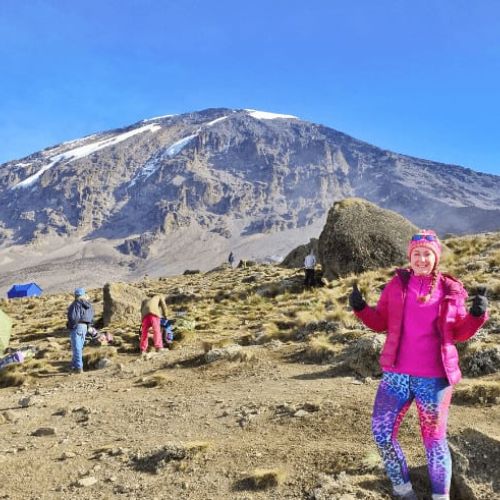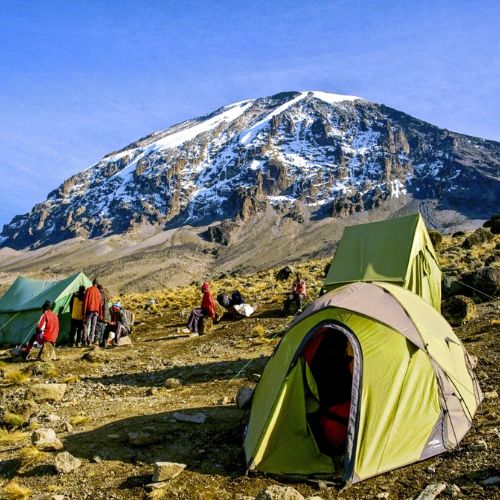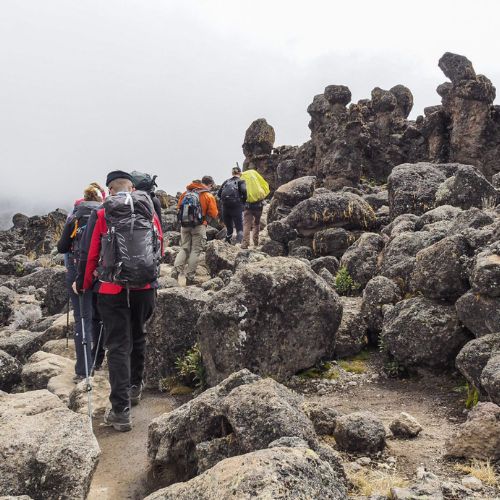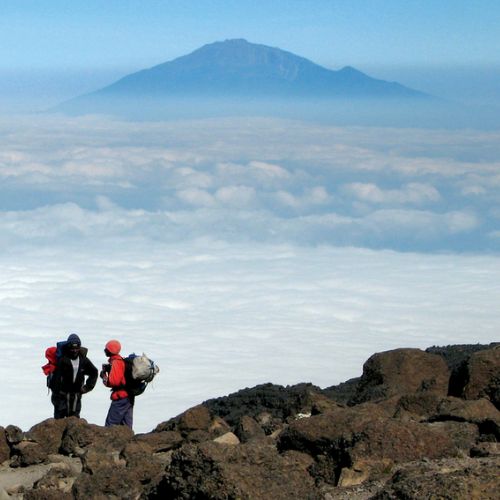6 Days Umbwe Route
TICKETS
HOTELS
GUIDE
FOOD
PARK ENTRY
VEHICLE
Tour Overview
For those who only have six days to climb Kilimanjaro, the Umbwe route is an excellent choice for experienced climbers looking for a challenging ascent. Unlike other routes, the Umbwe route is known for its steep and direct approach, which rapidly exposes climbers to higher elevations. This fast ascent helps to kickstart the body’s adaptation to altitude, but it also demands that climbers be in excellent physical condition due to the significant elevation gains and losses each day.
The six-day Umbwe variation is a strenuous and demanding route. In particular, the combination of day four and day five presents a very challenging schedule. Day four involves a rigorous hike from Barranco to Barafu, followed by dinner and a short rest period. The summit attempt begins around midnight, requiring a very long and exhausting day of climbing. The six-day Umbwe route demands 19-24 hours of tough trekking at extremely high elevations, with only 4-6 hours of sleep, making it suitable only for those prepared for a physically intense adventure
Day-by-Day Itinerary
Day 1: Umbwe Gate to Umbwe Cave
- Distance: 9.6 km / 6 mi
- Duration: 6-8 hours
- Habitat: Moorland
- Elevation: 1651m/5417ft to 2944m/9659ft
- Altitude Gained: 1293m
Depart from Moshi and drive to the Kilimanjaro National Park Gate. After obtaining permits, begin the trek through rainforest scenery and windy trails. The trail follows a ridge between two deep valleys, ascending through dense montane forest to reach Umbwe Cave Camp, perched between huge trees and thick undergrowth.
Day 2: Umbwe Cave to Barranco Camp
- Distance: 4.75 km / 3 mi
- Duration: 4-6 hours
- Habitat: Moorland
- Elevation: 2944m/9659ft to 3986m/13,077ft
- Altitude Gained: 1042m
After a good night’s sleep and breakfast, emerge from the rainforest onto a steep ascending path along the Umbwe ridge. Descend slightly to Barranco Camp situated in the valley. Temperatures begin to drop.
Day 3: Barranco Camp to Karanga Camp
- Distance: 5.2 km / 3 mi
- Duration: 3-4 hours
- Habitat: Alpine Desert
- Elevation: 3986m/13,077ft to 4034m/13,235ft
- Altitude Gained: 48m
Continue on a steep ridge up the Barranco Wall to the Karanga Valley and the junction connecting with the Mweka Trail. Overnight at Karanga Camp.
Day 4: Karanga Camp to Barafu Camp
- Distance: 3.3 km / 2 mi
- Duration: 3-4 hours
- Habitat: Alpine Desert
- Elevation: 4034m/13,235ft to 4662m/15,295ft
- Altitude Gained: 628m
Continue up toward Barafu Camp, completing the South Circuit, which offers breathtaking views of the summit from different angles. Rest early in preparation for summit night.
Day 5: Barafu Camp to Summit, then to Mweka Camp
- Distance Up: 4.86 km / 3 mi
- Duration Up: 5-7 hours
- Distance Down: 11.5 km / 7.1 mi
- Duration Down: 5-6 hours
- Habitat: Glaciers, Snow-Capped Summit
- Elevation Up: 4662m/15,295ft to 5895m/19,341ft
- Altitude Gained: 1233m
- Descent to: 3106m/10,190ft
- Altitude Lost: 2789m
Start the ascent between midnight and 2 a.m. Continue to the summit between the Rebmann and Ratzel glaciers. Reach Uhuru Peak, the highest point in Africa, and celebrate before descending to Mweka Camp. Rest and overnight at Mweka Camp.
Day 6: Mweka Camp to Mweka Gate, then to Moshi
- Distance: 9.1 km / 5.7 mi
- Duration: 3-4 hours
- Habitat: Rainforest
- Elevation: 3106m/10,190ft to 1633m/5358ft
- Altitude Lost: 1473m
After breakfast and a ceremony of appreciation with your crew, descend to Mweka Park Gate to receive your summit certificates. Continue to Mweka Village, where a vehicle will drive you back to your hotel in Moshi. Enjoy a hot shower, dinner, and celebrations!
Tour Price Inclusion and Exclusion
- Park fees
- All activities (unless labeled as optional)
- All accommodation as stated in the itinerary
- A professional driver/guide
- All transportation (unless labeled as optional)
- All Taxes/VAT
- Roundtrip airport transfer
- All Meals (as specified in the day-by-day section)
- International flights (from/to home)
- Additional accommodation before and at the end of the tour
- Tips (tipping guideline US$10.00 pp per day)
- Personal items (souvenirs, travel insurance, visa fees, etc.)
- Government imposed increase of taxes and/or park fees
- Alcohol drinks






